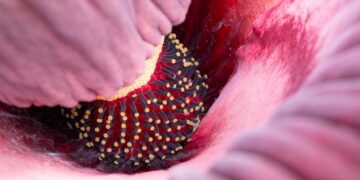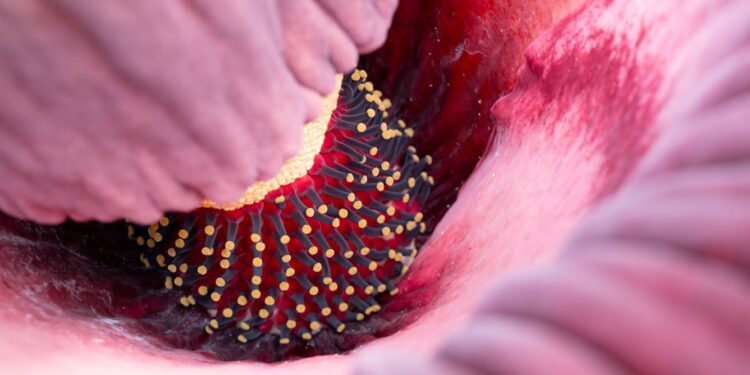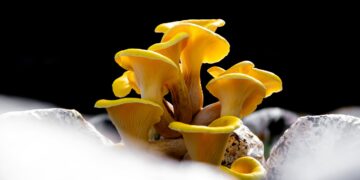Login to Continue Learning
Doing research can sometimes smell bad—quite literally. Corpse flowers are rare, with blooms occurring only every seven to ten years and lasting just two nights. Despite their red, massive, and beautiful appearance, these plants emit an overwhelming stench reminiscent of rotting flesh or decaying fish.
These plants get their nickname for good reason. Their pungent odors attract carrion insects such as beetles and flies, which are naturally drawn to decomposing meat, along with crowds of onlookers intrigued by the rare spectacle.
Plant biologists have studied corpse flowers for years, but atmospheric chemists like us were curious about something specific: the mix of chemicals that create their distinctive smell and how these emissions change throughout a single night. While previous studies had identified dozens of volatile organic and sulfur compounds contributing to corpse flower scents, no one had quantified emission rates or examined changes in those rates during a bloom. Recently, we had an opportunity to study Cosmo, a corpse plant at Colorado State University.
Meet Cosmo the Corpse Plant
Corpse plants are native to Indonesia but are considered endangered there. Several years ago, CSU received a corpse plant named Cosmo for study purposes. When Cosmo showed signs of blooming in spring 2024, we seized the chance to bring our atmospheric chemistry expertise into the greenhouse.
We deployed devices to collect air samples before, during, and after the bloom and used a gas chromatography mass spectrometer to analyze these samples. Colleagues also brought a time-of-flight mass spectrometer to measure volatile organic compounds every second downwind of Cosmo.
Corpse plants produce large flowers that can weigh over 100 pounds, heating themselves using thermogenesis to enhance emissions of organic compounds that attract insects. The plant’s heat and smell are so potent that in the 19th century, European explorers actively collected and distributed corpse plants worldwide.
Inside the giant petal-like leaf called a spathe, each plant has a central spike (spadix) with rows of tiny female and male flowers near its base. These bloom at different times to avoid self-pollination, explaining why corpse plants are listed as endangered and highlighting their need for efficient pollination strategies.
Female Flowers Do the Heavy Lifting
We found that female flowers do most of the work attracting pollinators, similar to previous studies’ findings. They emit vast amounts of organic sulfur compounds, including methanethiol, which smells like skunk spray, and dimethyl disulfide (garlic smell), dimethyl sulfide (unpleasant odor), and dimethyl trisulfide (rotting cabbage or onions).
While previous studies found some of the same compounds with different instruments, we were able to measure methanethiol concentrations quickly enough to track the bloom overnight. The female blooms emitted about 0.4% of the plant’s average biomass, which is a significant amount.
Floral Trapping
As Cosmo bloomed, emissions rapidly stopped early the next morning, suggesting floral trapping—a pollination strategy used by other members of Amorphophallus’s family. During floral trapping, the floral chamber can physically close through movement of hairs or expansion of surrounding spathe parts, cutting off emissions and forcing insects to stay for male flowers that bloom the following night.
The second night saw lower but sweeter emissions from male flowers, which release fewer sulfur compounds than females. Our evidence suggests that corpse plants likely employ this strategy as well.
In conclusion, corpse flower blooms are stinkier than landfills, with powerful emission rates designed to attract carrion flies over a vast distance and under atmospheric conditions that degrade floral ratios. These clever pollination strategies highlight the complexity of these enigmatic plants.



















